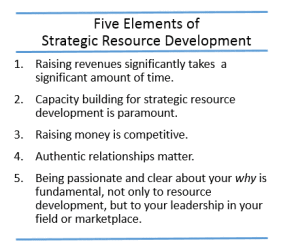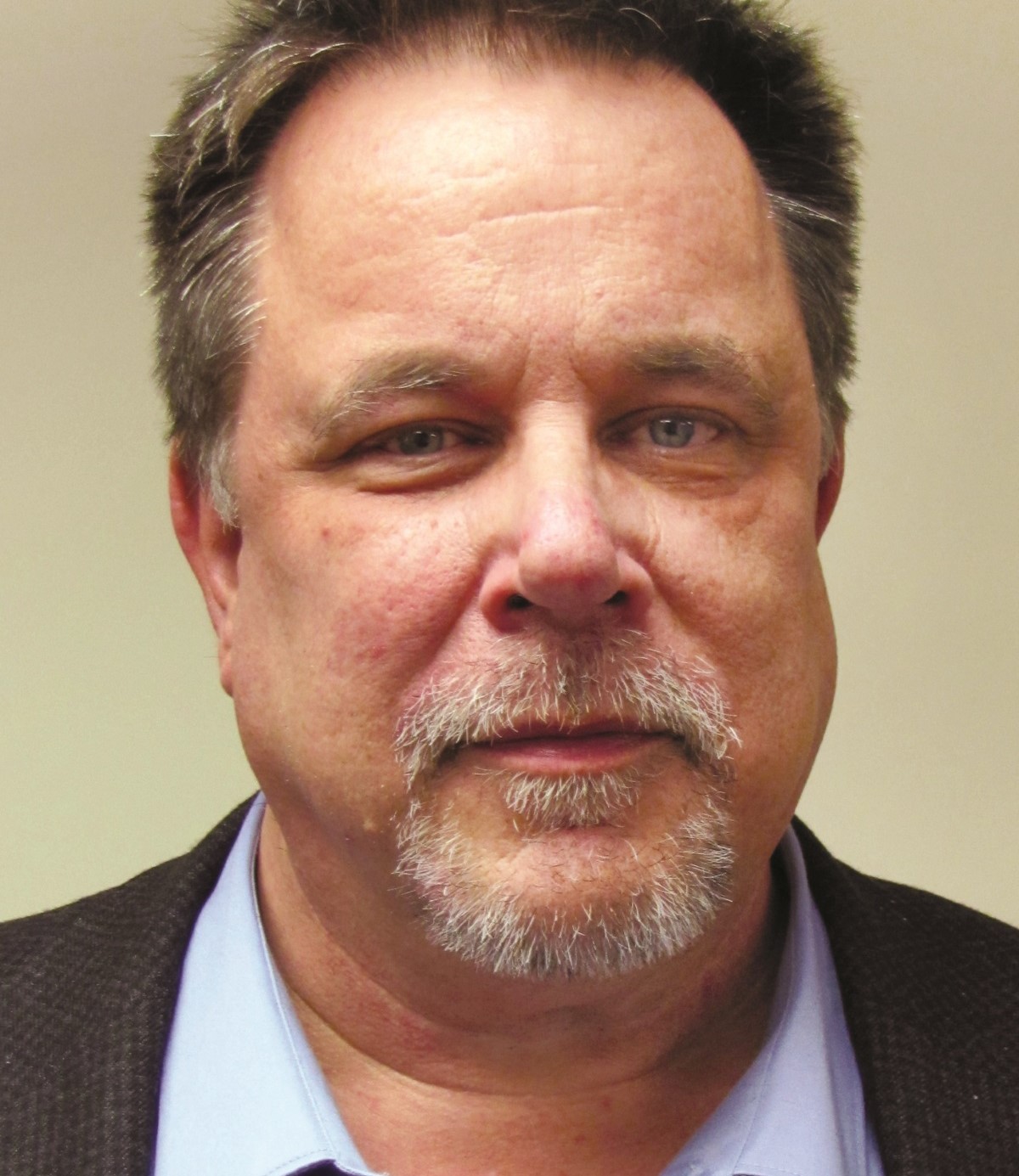I have read a fair amount over the years on fundraising and other resource development opportunities and one thing I found irritating in most of them was the thesis they presented, which generally was, “if you all do this or that, or follow this methodology, you all will raise more money.” The reality is, as you know, every organization will not increase their revenues in a given year. Many struggle just to maintain current levels of funding.
 A colleague of mine recently suggested I write a piece like this, given my “success” in significantly growing two non-profits. For one, I doubled staff and financial resources in about three years; for another agency the growth in revenues was about 70% over 5 years. At both agencies there were significant additions in services, but also large gains in securing sustainable funding and improving operational infrastructure (which is all about capacity). This leads me to my first point about generating resources: Raising revenues significantly, takes a significant amount of time. Patience is definitely a virtue in this instance.
A colleague of mine recently suggested I write a piece like this, given my “success” in significantly growing two non-profits. For one, I doubled staff and financial resources in about three years; for another agency the growth in revenues was about 70% over 5 years. At both agencies there were significant additions in services, but also large gains in securing sustainable funding and improving operational infrastructure (which is all about capacity). This leads me to my first point about generating resources: Raising revenues significantly, takes a significant amount of time. Patience is definitely a virtue in this instance.For many non-profits, unfortunately, there is barely enough time to maintain or protect current funding. We all know some won’t make it and others will shrink. Thus, the hope for magic bullets. That said, my point needs saying: whether attempting to maintain or grow your organization, increasing revenues is a strategic undertaking and when there is success, it rolls out over time. It’s a long game.
It’s why acquiescing to having no time will work against you. Somehow your organization and all who are a part of it have to create the time for strategic resource development. Not easy, I know, but if you don’t, all the learning you might acquire about fund development, grant writing, case-making and so on won’t matter.
That leads to the second point: Capacity building for strategic resource development is paramount. Imagine having ambitious early learning goals for your infant and then expecting everybody but you to engage in the efforts required to achieve your goals.
Boards that expect their lead staff to raise money but do nothing to build his or her capacity, not to mention the organization’s capacity, are failing to govern strategically. Time, skill, help with prospecting, and governance-oriented attention to the organization’s positioning in the market place must be a part of the board’s work. And the smaller your organization, the more important board involvement is. By the way, all of this relates to CEOs with large teams. If all CEOs do is set goals and largely just expect success, offering nothing more in terms of supporting and contributing to the capacity such efforts will take, I suggest success will at best not be as good as it could be.
This leads to the third element: Raising money is competitive. Even if you are trying to raise revenues for a collaboration, you are competing with others for limited funds. I have always embraced the competitive elements of generating funds. Not the type of competitiveness that would bash another agency or even hint to a funder, for example, that funding my organization instead of “that” organization is the way to go. My goal as a CEO was to ensure my organization rocked at what it did and to communicate that in many ways clearly, factually, and without anything that would resemble spin.
 My goal was to be the organization of choice for funders and donors. That meant not only doing well at our mission-work but also positioning our organization in the market place as worthy of support and engagement, and then to do the same with the funder/donor community. Every group with money to invest or give has myriad choices. I have always looked for ways for my organization to be one of those choices they act on.
My goal was to be the organization of choice for funders and donors. That meant not only doing well at our mission-work but also positioning our organization in the market place as worthy of support and engagement, and then to do the same with the funder/donor community. Every group with money to invest or give has myriad choices. I have always looked for ways for my organization to be one of those choices they act on.My fourth point in this posting is this: Authentic relationships matter. Not all of your relationships will result in financial support, but poor, empty, or lack of quality relationships will not work out so well for you. Authentic relationships continue on regardless; they are not just measured by money. What I mean by authentic is that the relationship is one about mutual interests or aspirations, is based on respect and trust. Each relationship looks different of course. Being authentic is a stance that produces authentic activity and exchange and is measured by the consistency of its expression. This fosters honesty in the mutual engagement that fuels the relationship. This point re-stresses my first one: this takes time.
I understand this takes up operational time and resources to achieve, but authenticity as a stance is about you at all times, not just fundraising time, right? Authenticity gets noticed. Sure, some won’t like you or appreciate your style. But my experience (or delusion!) is that many of my critics appreciate my stance with them. Authenticity – expressed with care. Don’t forget the importance of your style of being authentically you.
Potential sources of revenue are always people - donors or the staff of funders or other financial bodies. People want to know you – or feel like they do. Sure, they want to know who your organization is, too. And they want to know what it does and what it achieves. My observation is that more often than not, organizations fall short on explaining why they are here or if they do offer that insight, they fall short of conveying the passion that drives them. Sharing the why of your existence with authentic passion; it matters. That’s my final point: Being passionate and clear about your 'why' is fundamental, not only to resource development, but to your leadership.
. . .
I know. This posting doesn’t address all, if any, of your immediate needs for assistance. And I acknowledge that my resource development experience has been with mid-size to large organizations. I also know, as you do, that even if your organization excels as these five elements, financial gains and sustainability are more elusive, than in reach, like many non-profits. Still, I hope you see these five points as elements to consider as strategic drivers to your resource development efforts.
The next blog posting in this series is About Crowd Funding. Look for it soon.
Take Your Learning Further





